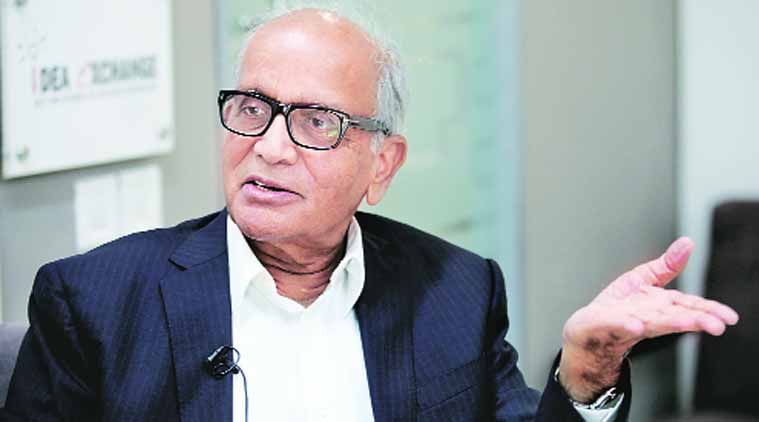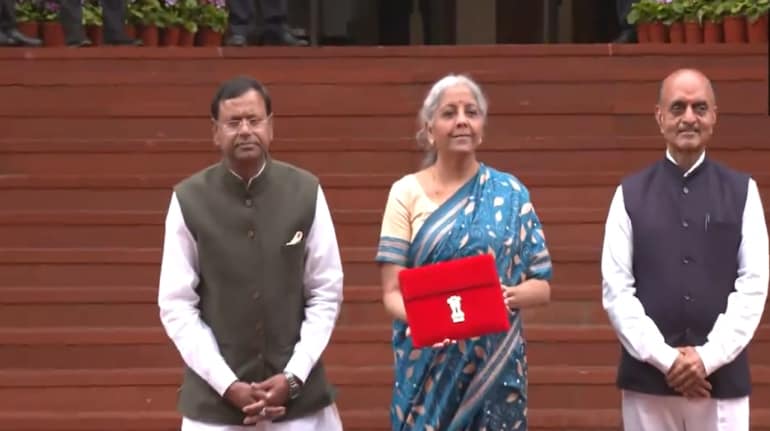
Maruti Suzuki India, the nation’s largest carmaker, completes 40 years of its operations this year. When Maruti was set up, the life expectancy given to the nascent public sector-run unit that partnered with a Japanese company was rather short, its non-executive Chairman RC Bhargava told this newspaper. “People called it a political project. Today, everyone takes the automobile industry in India and the success story of the last four decades as a given,” he pointed out. In a chat with Pranav Mukul and Anil Sasi, he recounted the early days of Maruti and detailed some of the key milestones in the company’s initial strategies that charted its course to becoming a case-study for the Indian manufacturing sector. Edited excerpts:
What are some elements of the Maruti story that can be emulated by India’s manufacturing sector today?
The first thing that applies to us is the whole question of trust: how important is trust. Unfortunately, largely thanks to our colonial past, our whole system is built on distrust. The British rules and regulations, which we have largely continued, are all based on system of checks and balances. Checks and balances lead to enormous delays everywhere.
With Suzuki, one of the reasons why this whole thing went so smoothly is because of Osamu Suzuki, and therefore Suzuki Motor Company had no distrust with their Indian partners right from the beginning. Once I asked Mr Suzuki, why did you take this decision to partner with the government at a time when no company was willing to put money into India. He said, “the first time when I met Mr V Krishnamurthy (founder chairman of Maruti Udyog Ltd) and you, I judged that these are two guys I can work with.” That’s it. Normally, Japanese do a very big survey of the country they’re going to enter. Nissan was doing that looking at the component industry. He did nothing.
Subscriber Only Stories
The second factor that worked in our favour — we had made a decision that we have to learn from the Japanese and see if we could do in India what the Japanese were doing in Japan. I think that was a major decision. We became learners. The important factor that led to our success (was) that we were willing to learn from Japan.
We had enough experience to realise that we can’t just transplant practices from a different country to India. So our role became to learn from Japan and to adapt those practices in a manner that while the result would remain what we wanted, some tweaks in the method would make it implementable in the Indian environment.
What are some of these lessons that Maruti took from the Japanese culture in its early days? And how easy or difficult was it for a company in the government setup to absorb these changes?
Advertisement
When we talk that we adapted Japanese management culture, it doesn’t mean we adapted in cut and paste. What are these major changes? The most important one was to change the relationship between the management and workers. Those were the days of frequent strikes and labour unrests. The biggest contributor to the success was the contribution of workers. The traditional thinking that labour and capital are always in conflict is actually a fallacy. It was valid when there was no competition, when quality and cost didn’t matter too much. This is what the Japanese did and we had to do in India — to convince the workers that they and the company were linked in terms of understanding what each would be at the end of one’s career span of 35 years. In Japan, it’s much simpler because everybody is educated and disciplined. Our situation is very different. That’s why we had to adapt. We wanted workers to be in a certain frame of mind. It took time, several years.
For example, attendance in a factory. In India, the usual practice is that 85 per cent of the working days, the worker comes to work, the remaining is all kinds of leaves. The Japanese told us right in the beginning — Mr Suzuki said that you have to have at least 95 per cent attendance. He cut out the leave reserve, he said you can’t have a leave reserve. After few years, we were getting more than 95 per cent attendance. Second was punctuality. In most factories, the actual working time is maybe 5-6 hours. A shift of 8 hours had to mean workers worked for 8 hours. So they had to come 15-20 minutes before the shift started. This was a new culture but with various ways we got that going.
Just not having leave reserves meant higher productivity by 15 per cent. Starting work on time is another 15-20 per cent productivity increase. Then we started this system of annual maintenance shutdown. It served two purposes. It’s an eight-day block Sunday to Sunday. It gives employees a chance to go off on a small break. So you have the workers going off at the same time, so in a way this compensates people. Second benefit is that it prevents machines breaking down in the course of production. Preventive maintenance meant every item of machines was overhauled, parts were changed. These things led to much higher productivity.
Advertisement
What was among the most important strategies when it came to human resources?
We had to win the trust of our workers. They didn’t have to do that in Japan and that required some work. Every month, I would personally have a meeting with the union executives. Before the meeting, we would circulate a note on some aspect of industrial working to educate the workers. This process carried on and on. During the meeting, we would try to educate them on other aspects — why management and workers together can actually be a win-win for both sides, whereas if you fight with each other neither wins.
Unfortunately, we don’t recognise that, our labour laws don’t recognise that. Most managements also don’t realise that their interests are aligned with those of the workers. And the results showed for us: within 10 years of starting our operations in the early 1990s, more than 2,000 of our workers had their own houses. People who were 25 or 26 or 27 years old were house owners. A large number of our workers today own cars. Children of our workers today are working as doctors, lawyers, consultancy companies, MNCs, etc. Our commitment to workers was that when the company prospers, you will share that prosperity.
How crucial was the decision to start exporting cars?
The decision to export cars was essentially to expose ourselves to competition. At that time, Maruti was getting all the praise in the Indian market. But the fact is that there was no benchmark to see whether we were producing quality cars. Hindustan Motors and Premier were not benchmarks. The only thing which we could’ve learned from was from outside. Expose yourself to European standards and learn from there.
Advertisement
Suzuki didn’t back the initial export plan. Mr Krishnamurthy was also opposed to it. He said we’re not going to make any money out of this and we will get a bad name. But somebody has to pay the cost of learning, and we had to learn.
I was the managing director, so I had the last word. Cars had to be homologated to European standards and Suzuki said we can’t help you, we don’t have the manpower. But our engineers said they will get it done. They got cars homologated in France and Italy. And Suzuki started helping when we were selling. There were a lot of quality issues in the beginning — things that we never thought of. They looked at the gap between the door and the fender and said the gap is not uniform. I never looked at it before. Little things like this, it was quite a learning experience. We didn’t make money but we learned.
Advertisement
There are a lot of other players from Japan, Europe and America that have come in subsequently but have not tasted the success in India that they’ve seen elsewhere like in China. Why is that?
One, the market here has not grown as fast as the Chinese car market. India is a small car market despite all this hype about SUVs and customers moving towards bigger cars and all that. The fact is that majority of customers are small car users and will remain small car users for a long time to come. No country in the world has 200 million plus scooter owner strength. A scooter owner doesn’t user a scooter out of choice. He uses it out of compulsion because he can’t afford, but his aspiration is to buy a four-wheeler. So what will these 200 million people upgrade to? Has to be low-cost cars.
Advertisement
This feeling that India will become a large car market doesn’t recognise the reality of our situation. Lot of people are making this mistake. All these people who came to India, what did they come to India with? Mostly big cars. Who succeeded in India first? Daewoo got success because they had a small car, Hyundai was successful because they had a small car. Tata got successful because they had the Indica. Having a reliable low-cost car enables millions of Indians to start economic activities. Today, the percentage of women in the job market as employees or entrepreneurs is much higher than it used to be. One of the things that has made this possible is the availability of low-cost reliable transport.
Maruti Suzuki goes beyond auto, it's the story of India's manufacturing potential: RC Bhargava, non-executive Chairman - The Indian Express
Read More

No comments:
Post a Comment